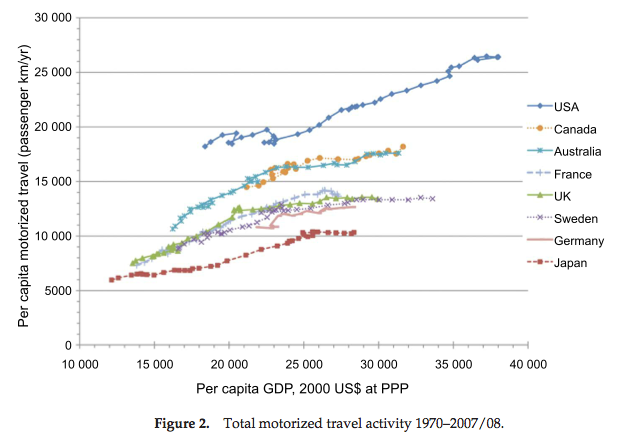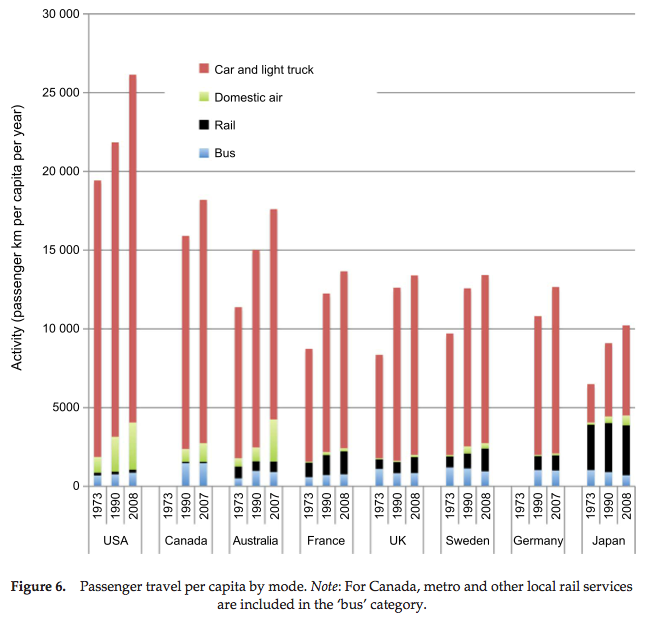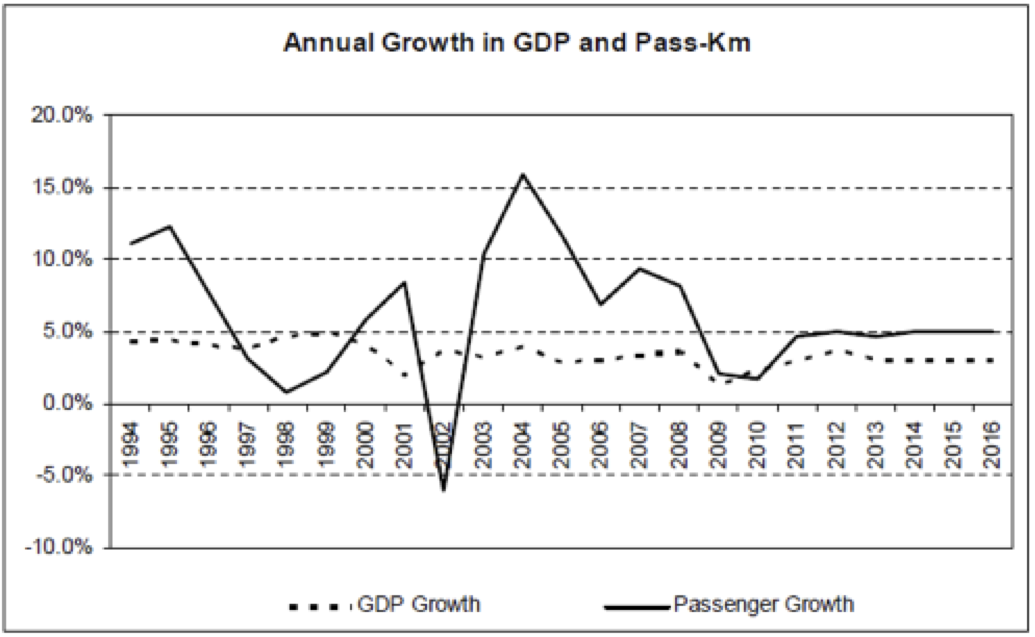Most economists understand is that growth in mobility and travel has for centuries signalled growing prosperity. Indeed, measures of transport miles are often used as indicators of economic activity. The graph below is from Millard-Ball and Schipper’s 2010 article on trends in per capita vehicle miles, showing the strength of this relationship since 1970 in a selection of developed countries.
But what the authors also observed was a turning point in the relationship around 2003. Was it peak travel, or a sign that such an event is around the corner?
On theoretical grounds, some analysts expected a peak in transport demand. Millard-Ball and Schipper note this argument.
Unless travel speeds increase, the fixed number of hours in a day and the consistent average of 1.1 hours per day that people devote to travel (Schafer and Victor, 2000) preclude ever-rising travel activity. But even if travel speeds do increase, declining marginal utility to new destinations implies that there exists some saturation point for travel demand. While in the past, higher speeds from infrastructure improvements have been used to access more distant destinations rather than reduce aggregate travel times, this relationship may no longer hold (Metz, 2010).
From their research, this theoretical peak, or saturation point, appears to have occurred.
“Since 2003, motorized travel demand has leveled out or even declined in most of the countries studied, and travel in private vehicles has declined,” the authors wrote in their study. “Car ownership has continued to rise, but these cars are being driven less.”
“My basic thesis is, ‘There ain’t room on the road.’”
But I wouldn’t be so fast in declaring that travel has peaked. For starters, it hasn’t. It is simply that the growth in travel is occurring at a lower proportion of GDP growth. One could blame the measurement of GDP itself for the kink in the trend (I would definitely would point the finger at this as one contributing factor).
Most importantly, the impact of changing modes of transport provides a key explanation. Below we can see that total passenger kilometres per capita, across road vehicles, bus, rail and domestic air travel, all continue to rise. These countries are also prime candidates for the ‘travel saturation’ thesis, particularly with respect to road transport. One can only imagine that in the developing world the trends in travel growth are even more acute.
Australia’s standout growth in air travel can bee seen below, with growth in domestic passenger kilometres typically exceeding GDP growth, with the trend predicted to continue.
A final factor that needs consideration is the rise of international air travel, which is excluded from the study.
If there is any one factor that symbolises development and progress it is our propensity to travel – for business or leisure. I can’t see this centuries long trend reversing in a hurry, but one needs to understand the subtly shifting global travel trends in order to better interpret economic data.
Tips, suggestions, comments and requests to [email protected] + follow me on Twitter @rumplestatskin


